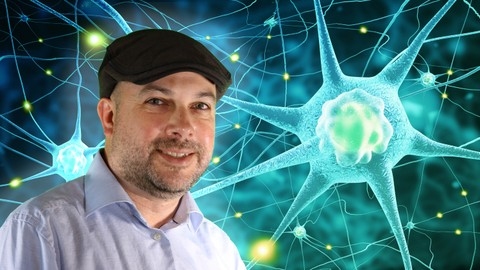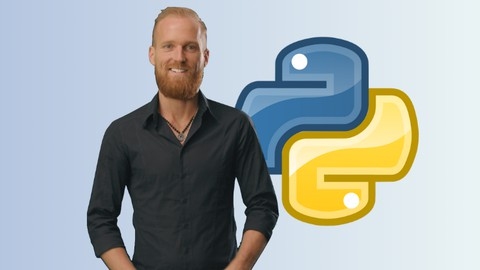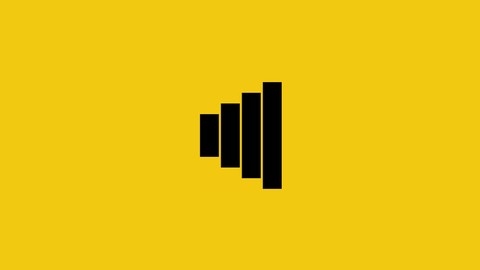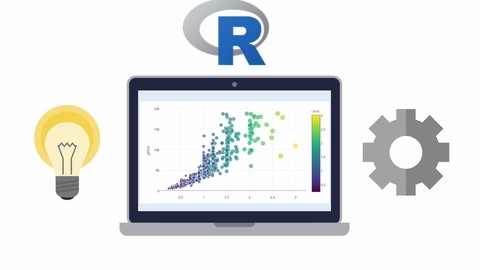Finding the right data science course can be a real challenge, especially with so many options available on platforms like Udemy.
It can feel overwhelming to sift through all the different courses and choose one that suits your needs and learning style.
You want a course that’s comprehensive, engaging, and taught by experts, but you also want to make sure it fits your goals and budget.
We understand the struggle of finding a high-quality data science course on Udemy, so we’ve done the research for you.
After reviewing dozens of courses, we’ve compiled a list of the best options, covering a range of topics from Python fundamentals to advanced machine learning techniques.
For the best course overall, we recommend Complete Data Science Bootcamp 2024.
This comprehensive course covers everything from basic statistics and Python programming to advanced machine learning algorithms and data visualization.
It features hands-on projects, real-world datasets, and a focus on practical application.
Keep reading to discover our other top picks for the best data science courses on Udemy, and find the perfect course to help you achieve your data science goals.
Python for Data Science and Machine Learning Bootcamp
This course begins with a straightforward introduction to Python and setting up your environment with Anaconda and Jupyter Notebooks, ensuring you have the necessary tools at your disposal.
Quickly moving on, you’ll dive into Python programming through an engaging crash course.
This section equips you with the foundational skills needed for data analysis, preparing you for the more complex topics ahead.
The course then guides you through essential libraries like NumPy and Pandas, pivotal for data manipulation, followed by an in-depth exploration of data visualization tools including Matplotlib, Seaborn, and Plotly.
These segments are packed with exercises and projects, allowing you to apply what you’ve learned in practical scenarios.
When it comes to machine learning, the course covers a broad spectrum of algorithms from Linear Regression to Neural Networks, offering both theoretical knowledge and Python implementation practices.
You’ll get hands-on experience with TensorFlow and Keras in the Neural Nets and Deep Learning section, preparing you for the latest advancements in the field.
Additionally, the course introduces Big Data and Spark with Python, teaching you how to handle large datasets using Spark and AWS.
This inclusion ensures you’re well-versed in a crucial aspect of modern data science.
By the end of this course, you’ll have completed several capstone projects, each designed to challenge your understanding and application of the course material.
The Data Science Course: Complete Data Science Bootcamp 2024
The course begins with an introduction to the field of data science, exploring various disciplines such as business analytics, data analytics, machine learning, and artificial intelligence.
You’ll learn about the differences between these disciplines and how they interconnect, as well as the benefits and popular techniques associated with each one.
Next, you’ll dive into the fundamentals of probability and statistics, which are crucial for data analysis.
The course covers topics like probability distributions, combinatorics, Bayesian inference, descriptive statistics, inferential statistics, confidence intervals, and hypothesis testing.
These concepts are reinforced with practical examples and exercises.
The course then transitions to programming in Python, starting with the basics of variables, data types, and syntax.
You’ll learn about operators, conditional statements, functions, sequences (lists, tuples, dictionaries), iterations, and advanced Python tools like object-oriented programming and modules.
The course provides numerous coding exercises to solidify your understanding of Python.
Moving on, you’ll explore advanced statistical methods in Python, including linear regression (simple and multiple), logistic regression, and cluster analysis (K-means clustering).
These techniques are essential for predictive modeling and data mining.
The course also covers data preprocessing, feature selection, and model evaluation techniques.
As you progress, you’ll be introduced to the exciting world of deep learning.
The course covers the fundamentals of neural networks, including their architecture, training process, and optimization algorithms.
You’ll learn how to build neural networks from scratch using NumPy and leverage powerful libraries like TensorFlow 2.0 for more complex models.
The course also addresses important concepts like overfitting, initialization, gradient descent, and learning rate schedules.
Additionally, the course includes a section on linear algebra, which is a crucial foundation for understanding deep learning models.
You’ll learn about matrices, vectors, tensors, and various operations like addition, subtraction, and dot products.
Towards the end, the course delves into a comprehensive case study that ties together the concepts learned throughout the program.
You’ll work on a real-world problem, preprocessing data, building machine learning models, and deploying them as a module.
The case study also incorporates data visualization using Tableau, allowing you to analyze and interpret the predicted outputs.
The course also covers additional topics like software integration, data connectivity, APIs, and ethical considerations in data science and AI.
Tableau A-Z: Hands-On Tableau Training for Data Science
The course starts by getting you set up with Tableau and the necessary datasets.
Then, it dives into the basics of creating visualizations like bar charts, adding colors and formatting.
From there, it covers more advanced topics like working with time series data, understanding aggregation and level of detail, and creating filters.
You’ll learn how to make maps, scatter plots, and dashboards with interactive actions.
The course goes deep into joining and blending data from multiple sources, as well as using the new relationships feature in Tableau 2020.2.
It teaches you how to create dual-axis charts and calculated fields within blends.
You’ll master table calculations, parameters, tree maps, and customer segmentation dashboards with advanced interactivity.
It even covers data prep tasks like pivoting, splitting columns, and fixing geographic data issues.
Later sections cover advanced topics like creating custom territories, clustering, cross-database joins, modeling with clusters, and new mobile design features.
You’ll learn the latest Tableau capabilities for connecting to PDFs and spatial files, step/jump line charts, and tooltips with vizzes.
The course wraps up with a roadmap for continued learning.
R Programming A-Z: R For Data Science With Real Exercises!
You’ll start with the “Hit The Ground Running” section, which includes a welcome challenge and instructions for installing R and RStudio on Mac and Windows.
This ensures you’re ready to dive into the course material right away.
The “Core Programming Principles” chapter covers the fundamentals of programming in R, including variable types, logical operators, loops, and control statements like “while,” “for,” and “if.”
You’ll also learn how to use the console and practice with a homework assignment on the law of large numbers.
Next, the “Fundamentals of R” section introduces you to vectors, vectorized operations, functions, and packages in R. You’ll apply these concepts to a financial statement analysis homework.
The “Matrices” chapter focuses on working with matrices in R, including creating, naming, subsetting, and visualizing them using matplot().
You’ll gain insights into basketball trends through a project and practice with a basketball free throws homework.
In the “Data Frames” section, you’ll learn how to import data into R, explore datasets, use the $ sign for column selection, perform basic operations, filter data frames, and visualize them using qplot().
A demographic analysis project and a world trends homework will reinforce these skills.
The “Advanced Visualization with GGPlot2” chapter dives into the powerful ggplot2 package for creating complex and customized visualizations.
You’ll learn about the grammar of graphics, factors, aesthetics, layers, statistical transformations, facets, coordinates, and themes.
A movie ratings project and homework on movie domestic gross percentages will allow you to apply these techniques.
The course also includes homework solution videos and a special offer section with bonus content on boxplots and a live training on unlocking top salaries.
Throughout the course, you’ll work with real-world datasets and complete hands-on projects, ensuring you gain practical experience in data analysis and visualization using R.
Statistics for Data Science and Business Analysis
The course begins by laying the foundation - distinguishing between population and sample data, understanding different data types, and levels of measurement.
You’ll learn visualization techniques like frequency tables, histograms, bar charts, and scatter plots for both categorical and numerical variables.
Next, you’ll dive into measures of central tendency (mean, median, mode), asymmetry (skewness), variability (variance, standard deviation), and relationships between variables (covariance, correlation).
A practical example lets you apply these descriptive statistics concepts to real estate data.
The course then explores inferential statistics - distributions (normal, standard normal), the central limit theorem, standard error, and confidence intervals for different scenarios like known/unknown population variance, dependent/independent samples.
Another hands-on example using shoe store data reinforces these concepts.
A major portion is dedicated to hypothesis testing - forming null/alternative hypotheses, understanding errors, p-values, and testing means for various cases like known variance, unknown variance, dependent/independent samples.
You’ll practice hypothesis testing on an employee database to analyze gender pay gaps.
Regression analysis is covered extensively - correlation vs causation, linear/multiple regression models, ordinary least squares assumptions, R-squared, regression tables interpretation, and dealing with categorical data using dummy variables.
A car price prediction example ties it all together.
The course is incredibly comprehensive, taking you from basics to advanced statistical techniques through lectures, quizzes, and practical examples using real datasets.
Data Science A-Z: Hands-On Exercises & ChatGPT Prize [2024]
The course begins with an exciting introduction to data science, highlighting its importance as a profession of the future.
You’ll then dive into data visualization using Tableau, a powerful tool for creating insightful visualizations and conducting data mining.
The course not only teaches you the basics of Tableau but also guides you through advanced techniques like creating bins, visualizing distributions, and validating your approach with statistical tests.
Moving on to the modeling section, you’ll receive a refresher on essential statistical concepts before diving into various regression techniques, including simple and multiple linear regression, logistic regression, and building a robust geodemographic segmentation model.
You’ll learn how to interpret regression outputs, handle assumptions, and assess model performance using techniques like the Cumulative Accuracy Profile (CAP) curve.
The data preparation section is equally comprehensive, covering business intelligence tools, ETL (Extract, Transform, Load) processes, and SQL programming for data science.
You’ll gain hands-on experience with Microsoft SQL Server, SSIS (SQL Server Integration Services), and learn how to handle errors during the ETL process.
But the course doesn’t stop there.
It also covers the crucial aspect of communication, teaching you how to work effectively with people across departments, present your findings to executives, and build a data-driven culture within your organization.
Throughout the course, you’ll have access to numerous datasets and hands-on exercises, allowing you to apply what you’ve learned in practical scenarios.
Additionally, the course includes a special section on using ChatGPT to boost your data science skills and become more efficient.
One of the standout features of this course is its focus on real-world applications and problem-solving.
You’ll learn how to approach business problems, set expectations, and communicate your findings effectively.
The course even includes a case study and a walkthrough of a real data science presentation, complete with tips on brainstorming and capturing your audience’s attention.
Machine Learning, Data Science and Generative AI with Python
Starting with setting up a Python environment tailored for scientific computing across Windows, Mac, or Linux, this course ensures you’re well-prepared.
It includes a Python crash course covering syntax, data structures, and functions, making it accessible if you’re new or returning to Python.
The curriculum progresses to foundational statistics and probability, applying these concepts through Python for a practical learning experience.
You’ll explore predictive models, including linear and polynomial regression, and delve into machine learning with supervised and unsupervised learning, Bayesian methods, and K-Means clustering.
A significant focus is on neural networks and deep learning, where you’ll learn to implement models using Tensorflow and Keras, and understand convolutional and recurrent neural networks.
The course also introduces you to the cutting-edge field of generative AI, including Variational Auto-Encoders (VAE’s) and Generative Adversarial Networks (GAN’s), for synthesizing realistic images.
Practical activities are integrated throughout, allowing you to apply concepts in real-world scenarios, from spam classifiers to movie recommendation systems.
The course culminates in a final project on mammogram image classification, challenging you to apply your learning.
Additionally, you’ll gain insights into deploying models, conducting A/B tests, and the ethical considerations in deep learning.
With the latest on Generative AI, including GPT and ChatGPT, this course equips you with the skills to tackle current and future challenges in machine learning and data science.
Python A-Z: Python For Data Science With Real Exercises!
This course begins by walking you through installing Python, Anaconda, and Jupyter Notebook on Windows or MAC.
You’ll get the datasets needed for hands-on practice right away.
The first major section dives into core programming principles like variables, Boolean operators, loops, and if statements - the building blocks of coding.
You’ll apply these concepts by analyzing the law of large numbers through homework.
Next, you’ll explore Python fundamentals: lists, tuples, functions, packages like Numpy for arrays, and array slicing.
Another homework lets you analyze financial statements.
The course then moves into matrices - vital for data science.
You’ll build and operate on matrices, create visualizations, design functions, and gain insights into basketball data through exercises.
Data frames and Pandas are up next.
You’ll import datasets, explore them, rename columns, subset, filter, and visualize with Seaborn.
The homework analyzes world trends.
Advanced visualization techniques like histograms, KDE plots, subplots, violin/box plots, and facet grids follow.
You’ll style plots and even build dashboards!
The homework dissects movie grosses.
Finally, you’ll get detailed video solutions for all the homework assignments to reinforce concepts.
By the end, you’ll have a solid grasp of using Python for data analysis and visualization - a crucial data science skill.
Power BI A-Z: Hands-On Power BI Training For Data Science!
The course kicks off by welcoming you with an installation guide and dataset resources.
You’ll then dive straight into creating your first bar chart in Power BI, learning how to connect to data files like CSV, navigate the interface, drill down hierarchies, add colors, calculated columns, labels, and formatting.
Next, you’ll explore time series data, understanding aggregation and granularity.
You’ll create an area chart, learn about highlighting, and work with filters and slicers.
This hands-on approach ensures you grasp these core concepts thoroughly.
Moving on, you’ll join datasets using different join types (LEFT, RIGHT, INNER, OUTER) and handle duplicate values or multiple join fields.
You’ll then create maps, leveraging hierarchies, latitudes, and longitudes, and learn the difference between calculated columns and measures through examples.
The course also covers creating scatter plots, combining charts, filters, and slicers for interactive reports.
You’ll even add a donut chart to enhance your visualizations.
In the next section, you’ll build an interactive Business Intelligence report from scratch.
You’ll map geographical roles, create table calculations for gender, and bin distributions for age and balance.
Additionally, you’ll learn to create a treemap chart and a customer segmentation dashboard, controlling report interactivity.
To take your skills further, you’ll leverage custom visuals like chord charts to visualize the European Debt Crisis.
Kirill will guide you through installing custom visuals, understanding chord chart mechanics, setting up multiple views, and adding treemaps for deeper insights.
Throughout the course, quizzes reinforce your learning, ensuring you grasp each concept before progressing.
Complete A.I. & Machine Learning, Data Science Bootcamp
Starting with an introduction to the online classroom, this course fosters a supportive learning environment where you can easily ask questions and interact with peers and instructors.
You’ll quickly move into practical applications, exploring machine learning through engaging exercises like the Machine Learning Playground and building a YouTube Recommendation Engine.
The course breaks down complex topics into understandable segments, covering different types of machine learning, data evaluation, and the six-step machine learning framework.
Key sections include hands-on training in data manipulation with Pandas and NumPy, data visualization with Matplotlib, and model building with Scikit-learn.
You’ll tackle real-world projects on supervised learning, enhancing your problem-solving skills and applying theoretical knowledge in practical scenarios.
For those interested in the latest in A.I., the course also covers neural networks, deep learning, and TensorFlow 2, teaching you to manage unstructured data and leverage Google Colab and GPUs.
Beyond technical skills, you’ll learn to effectively present your work, ensuring you can communicate complex ideas clearly to various audiences.
Career advice, contributions to open source projects, and a thorough Python programming section are included to round out your education, making this bootcamp a solid foundation for anyone looking to enter the fields of machine learning and data science.
Tableau Advanced: Master Tableau in Data Science
This comprehensive syllabus covers a wide range of advanced topics in Tableau, equipping you with the skills to tackle complex data analysis and visualization challenges.
You’ll start by diving into groups and sets, learning how to work with them, create static and dynamic sets, combine sets, and control them with parameters.
This section culminates in building a dashboard showcasing startup data, complete with tricks to enhance its functionality.
Next, you’ll explore advanced table calculations, a powerful feature in Tableau.
You’ll learn how to create multiple joins, differentiate between calculated fields and table calculations, and specify the direction of computation.
Additionally, you’ll gain hands-on experience in writing your own table calculations, adding a second layer moving average, and ensuring quality assurance for these calculations.
The course then delves into advanced data preparation and analytics within Tableau.
You’ll build box plots, analyze them, and work with large data sources.
Pivoting and splitting data will become second nature, and you’ll learn how to apply data source filters effectively.
Real-world retail scenarios will be explored, and you’ll master trendlines, data preparation exercises, advanced time series blending, and even forecasting in Tableau.
Creating animations in Tableau is another key skill you’ll acquire.
You’ll edit blending relationships, build visualizations, add animations, manually sort blended data, and leave a trail in your animations, culminating in a polished dashboard.
Level of Detail (LOD) calculations, a powerful feature in Tableau, will be demystified.
You’ll gain an intuitive understanding of LOD calculations, learn about the different types (INCLUDE, EXCLUDE, and FIXED), and explore how to use multiple fields in these calculations.
Advanced mapping techniques are also covered, including working with polygons, background maps, and solving business challenges using maps.
You’ll learn how to use the drawing tool for Tableau, add custom images to maps, calculate distances, and customize maps with Mapbox.
Throughout the course, you’ll work on real-world projects, ensuring you gain practical experience in applying the concepts you’ve learned.
By the end, you’ll have a solid grasp of advanced Tableau techniques, positioning you as a skilled data analyst or data scientist.
Data Science and Machine Learning Bootcamp with R
Starting with an introduction to data science and R programming, this course prepares you by covering setup procedures for Windows, Mac OS, or Linux, and familiarizes you with RStudio.
You’ll quickly move into practical programming, learning about variables, data types, and vector operations, along with essential data structures like matrices, data frames, and lists.
The course doesn’t stop at programming.
It extends into data manipulation, teaching you how to work with various data formats, including CSV and Excel, and even how to scrape web data.
This skill set is crucial for handling diverse data sources you’ll encounter in real-world scenarios.
Machine learning is at the core of this bootcamp, with detailed sections on linear and logistic regression, K-nearest neighbors (KNN), decision trees, random forests, support vector machines (SVM), and neural networks.
Each module includes a project, allowing you to apply theoretical knowledge to practical tasks, reinforcing your learning.
Data visualization skills are also covered, with tutorials on ggplot2 and Plotly, enabling you to create both static and interactive visualizations.
This is key for analyzing and presenting data effectively.
The capstone project culminates your learning experience, challenging you to apply all your acquired skills on a real-world problem.
Also check our post on the best Data Science courses on Coursera.
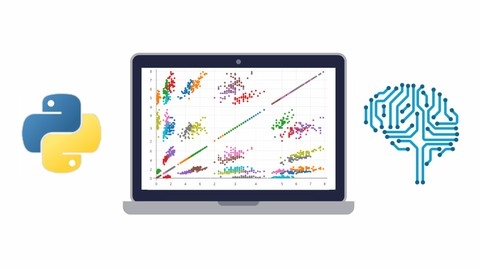

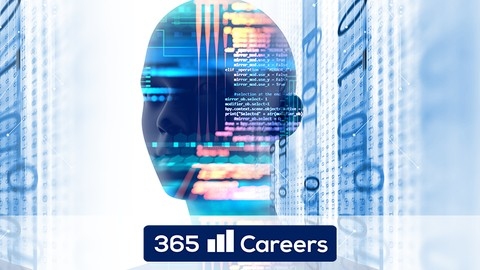


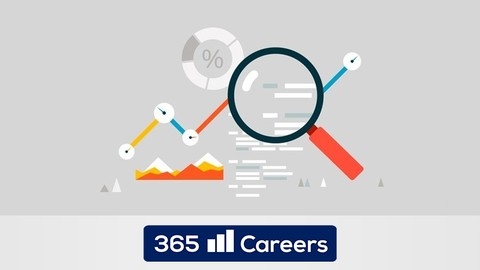
![Data Science A-Z: Hands-On Exercises & ChatGPT Prize [2024]](/img/best-data-science-courses-udemy/513244_DataScienceA-ZHands-OnExercisesChatGPTPrize2024.jpg)
